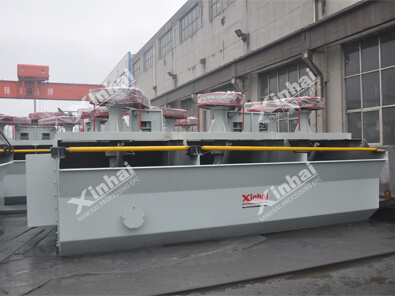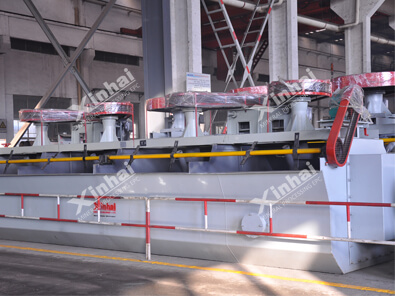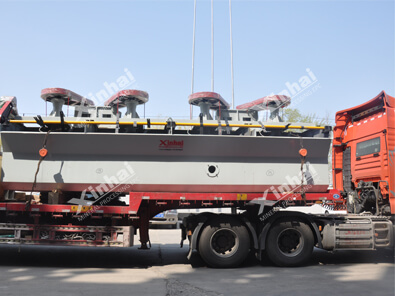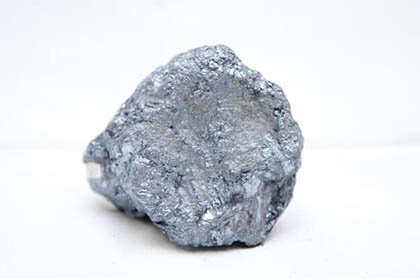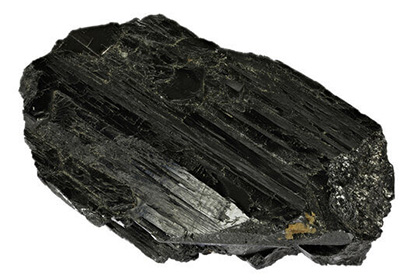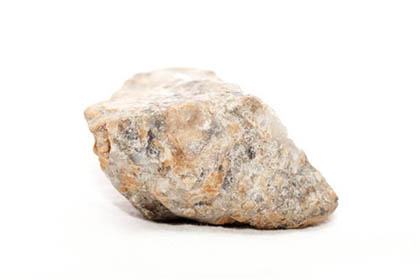Comprehensive Guide to Flotation Machine Maintenance
 Essow
Essow
 Jul 27, 2023
Jul 27, 2023
 1394
1394
If you want to know more details about equipment, solutions, etc, please click the button below for free consultation, or leave your requirements!
Effective maintenance of flotation machines is crucial to ensure optimal mineral processing operations. In the realm of mining and metallurgy, flotation machines are indispensable equipment, separating valuable minerals from waste material, thereby maximizing the extraction of precious elements. However, to maintain efficiency and longevity, regular maintenance of these machines is crucial. This article aims to provide an extensive guide to flotation machine maintenance.
Understanding the Functionality of Flotation Machines
Before delving into the maintenance strategies, it is essential to comprehend the mechanism of flotation machines. They operate by introducing air into a mixture of finely ground ore/water chemicals, which causes the desired mineral to adhere to the air bubbles and float to the water surface. The froth is then collected, while the undesired material sinks to the bottom, thus allowing for efficient mineral recovery.

(Structure of Flotation Machine)
01Regular Maintenance
BackImportance of Regular Maintenance
The regular maintenance of flotation machines ensures consistent operations, improved efficiency, reduced downtime, and extended equipment life span. It mitigates the risk of unexpected breakdowns and reduces unnecessary costs associated with emergency repairs. Maintenance also enhances the safety of the workers by reducing the chances of equipment malfunctioning.
Daily Maintenance
Daily maintenance includes routine checks and adjustments to guarantee the system's effective operation. Keep the following points in mind:
1. Inspections: Regular inspections of the machine components are crucial. Look for wear and tear in parts such as the agitator, disperser, cover board, and electric motors. Always replace worn-out components promptly.
2. Lubrication: Regular lubrication is essential for the smooth operation of moving parts. Make sure to lubricate the driving part and spare parts regularly with the recommended lubricant.
3. Cleaning: Keeping the machine clean is critical for its optimal functioning. Make sure to clean the flotation groove after each shift to avoid mineral residues that may affect the flotation effect.
4. Monitoring: Keep a close eye on the indicators such as temperature, current, and voltage to identify any deviations from the normal ranges. This early detection could prevent serious damages.
Weekly Maintenance
Weekly maintenance is slightly more involved than daily maintenance and includes more comprehensive checks.
1. Fastening Checks: Make a thorough examination of the bolts, screws, and other fasteners in the machine. Tighten any loose components immediately to prevent damage due to vibrations during operations.
2. Motor Examination: Check the motor and the driving belt for any signs of wear, cracks, or slack. Replace any worn-out belts to avoid sudden machine stoppages.
3. Comprehensive Cleaning: Conduct an in-depth cleaning of the entire machine. Cleaning the impeller and stator system is of utmost importance as it ensures smooth airflow, which is critical for the flotation process.
Monthly Maintenance
Monthly maintenance is comprehensive and is dedicated to identifying any significant operational challenges that could potentially lead to machine failure.
1. Full Inspection: Undertake a full inspection of the entire machine. Check the flotation cells for any signs of corrosion, wear, or cracking. Monitor the bearings, seals, and other components for wear and replace them if necessary.
2. Lubrication System Check: Ensure the lubrication system is functioning correctly. This involves checking the oil levels, oil quality, and ensuring the lubricant is distributed correctly.
3. Drive System Check: The drive system, including the motor, gearbox, and belt system, should be thoroughly inspected. A malfunctioning drive system can lead to serious operational problems.
Quarterly to Annual Maintenance
This maintenance involves shutting down the machine for in-depth checks and repairs. It may include the replacement of wear parts, major cleaning tasks, and other comprehensive activities.
1. Major Part Replacement: Replace significant parts showing signs of extensive wear and tear. This could include the flotation mechanism, feed pipe, and discharge box.
2. Lubrication System Overhaul: Completely drain and refill the lubrication system. Replace filters and seals, and ensure the system is free of contaminants.
3. Full Inspection and Cleaning: Conduct a full inspection and cleaning of the machine, focusing on areas not frequently inspected in the daily, weekly, and monthly maintenance routines.
Predictive Maintenance
In addition to routine maintenance, predictive maintenance has been increasingly recognized as a crucial strategy. It involves the use of sophisticated technologies like machine learning, artificial intelligence, and advanced analytics to predict potential equipment failures. By analyzing historical and real-time data from the flotation machines, these techniques can forecast the machine's lifespan and performance, helping operators take timely corrective actions.
1. Condition Monitoring: Keep track of the machine's condition by observing parameters such as vibration, temperature, and sound levels. Unusual patterns could be early signs of malfunction.
2. Data Analysis: Use advanced algorithms to analyze collected data and predict potential machine failures or performance degradations. This proactive approach minimizes downtime and reduces maintenance costs.

(Flotation Machines in the Factory)
02Precautions in Maintenance
BackWhile in-house maintenance is essential, it's also necessary to enlist the help of professionals periodically. They will provide a more detailed diagnosis of the machine's health and help with complex repairs.
Documentation and Training
Lastly, proper documentation of all maintenance activities should be maintained. This helps to create a historical record, which is crucial for planning future maintenance activities. Staff should also be trained on maintenance procedures, safe operation, and the handling of emergencies.
In conclusion, flotation machine maintenance is not an activity that should be overlooked or taken lightly. Regular and meticulous maintenance will ensure the machine operates optimally, extending its service life and contributing significantly to the profitability of the mining operation. With the right maintenance plan, the flotation machine can prove to be an asset for mineral processing operations for many years.
Essential Safety Precautions during Maintenance
While conducting maintenance tasks, safety should be a top priority. It's crucial to adhere to these safety guidelines:
1. Lockout/Tagout (LOTO) Procedures: Before any maintenance activity, the machine should be completely shut down and locked out to ensure that it cannot be unintentionally powered on.
2. Personal Protective Equipment (PPE): Maintenance personnel should always wear appropriate PPE, such as gloves, safety glasses, and hard hats, to prevent injury.
3. Training: All personnel involved in maintenance should be thoroughly trained in the correct procedures and potential hazards.
4. Hazardous Materials: Handle hazardous materials correctly and safely, using appropriate containers and disposal methods.
Ensuring Maintenance Documentation and Reporting
Proper documentation and reporting are critical components of successful flotation machine maintenance. They provide historical data that can help diagnose recurring problems, plan future maintenance tasks, and assist in predictive maintenance strategies. Here are some guidelines for effective maintenance documentation:
1. Record Maintenance Tasks: Document all maintenance activities performed, including inspections, component replacements, and any issues identified and rectified.
2. Track Machine Performance: Regularly document the machine’s performance metrics. Over time, this data can provide insight into the machine's health and help predict potential failures.
3. Use a Standardized Format: Maintain records in a consistent, standardized format. This helps in easy referencing and data analysis.
4. Implement a Digital Documentation System: A digital system enables easy updating and retrieval of records, data analysis, and sharing of information.
5. Regular Reporting: Regular maintenance reports provide a snapshot of the machine’s health, pending tasks, and any pressing issues. These reports are valuable for decision-making processes related to the machine.
The Role of Digitalization in Maintenance
Digitalization has revolutionized how maintenance activities are conducted in the mineral processing industry. Remote monitoring systems and Internet of Things (IoT) devices can capture and transmit real-time data from the flotation machines to a centralized system. Operators can monitor the machines' status from anywhere and plan maintenance tasks more efficiently.
Digital twin technology can also be used to simulate the machine's performance under various conditions, helping identify potential weak points and planning preventative maintenance accordingly. These technologies enhance predictive maintenance, making it more accurate and efficient.
The Impact of Flotation Machine Maintenance on the Entire Mining Process
The importance of flotation machine maintenance goes beyond the machine itself. Its effects can significantly impact the entire mining process.
1. Consistent Ore Processing: Properly maintained flotation machines ensure consistent and efficient ore processing, leading to a steady supply of valuable minerals. This consistency is vital for downstream processes and overall production timelines.
2. Quality of Extracted Minerals: The flotation process's efficiency directly affects the quality of the extracted minerals. A well-maintained machine ensures optimal mineral recovery and reduces impurities, resulting in high-quality output.
3. Worker Productivity: Regular maintenance reduces machine downtime, ensuring continuous operation. This, in turn, boosts worker productivity as they can focus on their core tasks instead of dealing with machine failures.
4. Overall Profitability: Given all these factors, it’s easy to see how effective flotation machine maintenance can enhance the mining operation's overall profitability. Reduced downtime, consistent production, and high-quality output all contribute to a better bottom line.

(Flotation Machines)
Challenges in Flotation Machine Maintenance
Despite the importance of flotation machine maintenance, it is not without challenges. Here are some common issues faced by maintenance teams:
1. Accessibility: Flotation machines, particularly those in large-scale operations, can be difficult to access for maintenance purposes due to their size and the complexity of their setup.
2. Detecting Problems Early: With their complex designs and numerous moving parts, detecting potential issues in flotation machines before they escalate can be challenging.
3. Resource Constraints: Many mining operations may not have sufficient resources, both in terms of personnel and equipment, to perform effective and regular maintenance.
4. Training: Adequate training of personnel to maintain the machines and diagnose potential issues is a common challenge, especially in regions where skilled labor is scarce.
To overcome these challenges, organizations must invest in regular training programs, advanced tools and technologies, and effective maintenance strategies.
03Conclusion
BackTo summarize, regular and predictive maintenance of flotation machines is a critical task that ensures the consistent operation, increased efficiency, and extended equipment lifespan. While daily, weekly, and monthly maintenance can be done in-house, it's also essential to get professional help for more complex tasks and inspections.
Adopting a digital approach to maintenance can also yield significant benefits. It allows for real-time monitoring, predictive analysis, and remote access, making the maintenance tasks more effective and efficient. However, while performing these tasks, safety should always be paramount.
Proper maintenance practices are a small investment considering the potential downtime, financial losses, and safety hazards that could arise from machine failures. Therefore, by maintaining the optimal performance of the flotation machines, organizations can ensure efficient mineral processing operations, contributing significantly to their profitability and success.
We have many articles about flotation machines, you could click the links to check them and have more information about flotation machines.
Comprehensive Guide to Flotation Machines: Principles, Applications, and Recent Developments
Flotation Tanks Types and Selection
Basic Introduction of Flotation Reagent
 +86 18716000713
+86 18716000713 xlyin@xinhaimining.net
xlyin@xinhaimining.net




 Message
Message Chat Now
Chat Now


